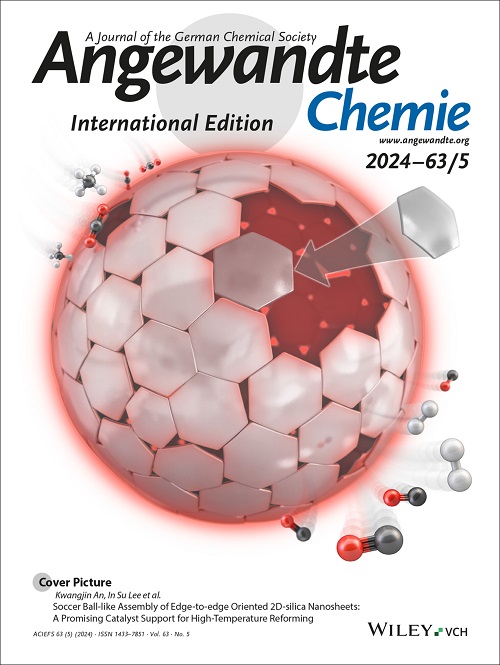Unexpected Activities of CYP152 Peroxygenases towards Non-carboxylic Substrates Reveal Novel Substrate Recognition Mechanism and Catalytic Versatility
IF 16.1
1区 化学
Q1 CHEMISTRY, MULTIDISCIPLINARY
引用次数: 0
Abstract
Exploring and exploiting the catalytic promiscuity of enzymes is a central topic and captivating challenge in enzymology. CYP152 peroxygenases are attractive biocatalysts for diverse reactions under mild conditions using H2O2 as cofactor. However, their substrate scope is limited by a carboxyl group required for substrate assisted acid-base catalysis, following the well-accepted principle that heme-dependent H2O2-utilizing enzymes employ a carboxyl group within their active sites to facilitate H2O2 activation. Herein, we reveal for the first time that several CYP152 family members can directly degrade various aromatic pollutants without any carboxyl group, exhibiting novel aromatic hydroxylation and dehalogenation activities. Through crystal structure analysis, isotope tracing experiments, and QM/MM calculations, we elucidate that the phenolic hydroxyl group activated by electron-withdrawing substituent(s) functionally replaces the carboxyl group, forming hydrogen bonds with the conserved arginine leading to Compound I formation. The oxygen atom of the newly formed hydroxyl group originates from water, bypassing the conventional oxygen rebound step. These findings provide first insights into the mechanisms of P450 peroxygenases towards non-carboxylic substrates, expanding our knowledge of biological C-H activation and C-halogen bond cleavage beyond canonical P450 reactions. This discovery holds immense potential for harnessing these enzymes in innovative strategies for industrial biocatalysis and environmental remediation.CYP152过氧酶对非羧基底物的意外活性揭示了新的底物识别机制和催化的多功能性
探索和利用酶的催化乱交是酶学的一个中心话题和迷人的挑战。CYP152过加氧酶是一种有吸引力的生物催化剂,可在温和条件下以H2O2为辅助因子进行多种反应。然而,它们的底物范围受到底物辅助酸碱催化所需的羧基的限制,这遵循了公认的原则,即血红素依赖性H2O2利用酶在其活性位点内使用羧基来促进H2O2活化。本研究首次发现CYP152家族成员可以直接降解多种不含羧基的芳香族污染物,表现出新的芳香族羟基化和脱卤活性。通过晶体结构分析、同位素示踪实验和QM/MM计算,我们阐明了被吸电子取代基激活的酚羟基在功能上取代了羧基,与保守的精氨酸形成氢键,从而形成化合物I。新形成的羟基的氧原子来源于水,绕过了传统的氧反弹步骤。这些发现首次揭示了P450过加氧酶对非羧基底物的作用机制,扩展了我们对生物C-H活化和c -卤素键裂解的认识,超出了典型的P450反应。这一发现为利用这些酶进行工业生物催化和环境修复的创新策略提供了巨大的潜力。
本文章由计算机程序翻译,如有差异,请以英文原文为准。
求助全文
约1分钟内获得全文
求助全文
来源期刊
CiteScore
26.60
自引率
6.60%
发文量
3549
审稿时长
1.5 months
期刊介绍:
Angewandte Chemie, a journal of the German Chemical Society (GDCh), maintains a leading position among scholarly journals in general chemistry with an impressive Impact Factor of 16.6 (2022 Journal Citation Reports, Clarivate, 2023). Published weekly in a reader-friendly format, it features new articles almost every day. Established in 1887, Angewandte Chemie is a prominent chemistry journal, offering a dynamic blend of Review-type articles, Highlights, Communications, and Research Articles on a weekly basis, making it unique in the field.

 求助内容:
求助内容: 应助结果提醒方式:
应助结果提醒方式:


